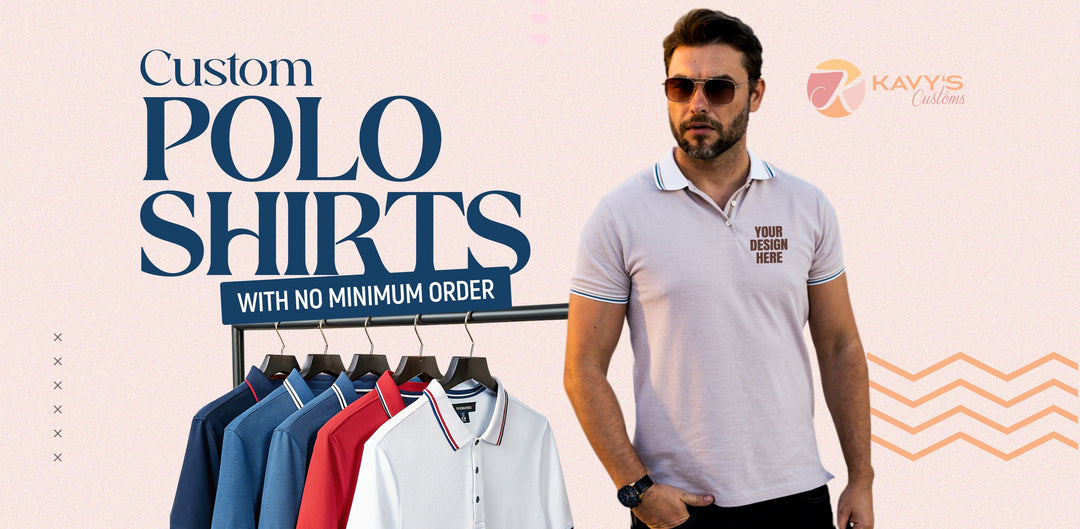The Ultimate Guide to Hi Vis Clothing: Stay Safe with High Visibility Vest, Hi Vis Shirts & More

When you work in busy, dangerous, or dark areas, safety is a top priority. Hi vis clothing is not just a fashion statement—it is a lifesaver. In this guide, we will show you everything you need to know about hi vis clothing, including high vis vests, hi vis shirts, and other high visibility clothing. We will also cover the latest technology, safety standards, and best practices to keep you safe and seen. Get ready to explore a world where safety meets style!
“Wearing high visibility clothing is like having a built-in safety beacon. It protects lives by making sure workers are seen.” – Occupational Safety and Health Administration (OSHA)
Introduction To High Visibility Clothing

In many industries, from construction and road work to warehousing and emergency services, hi vis clothing is a must-have. The simple act of wearing hi vis clothing can reduce workplace accidents by up to 60% (OSHA, 2021). With increasing safety demands and stricter regulations, knowing about high vis clothing is more important than ever.
This article is here to help you understand why high visibility clothing is essential, how it works, and how to choose the best items like a high visibility vest or hi vis shirts for your needs. Whether you are an employer, worker, or safety enthusiast, this guide will provide you with clear, easy-to-follow information that is backed by experts and trusted sources.
What is Hi Vis Clothing?
Hi vis clothing is specially designed apparel that makes the wearer stand out. It is made with bright colors like neon yellow, orange, or green combined with reflective strips that shine when light hits them. This combination of color and reflection helps people see you, even from a long distance.
Key Points:
- Visibility: Hi vis clothing is made to be seen in both daylight and darkness.
- Materials: Most hi vis clothing uses fabrics that are durable, lightweight, and sometimes even water-resistant.
- Design: The design usually includes reflective materials that bounce back light, making the wearer noticeable at night or in low-light conditions.
High vis clothing is used in many settings, including construction sites, road work, and emergency services. When workers wear high vis clothing, it alerts drivers and equipment operators to their presence, reducing the risk of accidents.
The Importance of High Visibility Clothing
High visibility clothing plays a crucial role in keeping workers safe. In hazardous environments, every second counts. The bright colors and reflective materials in hi vis clothing ensure that workers are seen quickly and clearly.
Statistics and Expert Insights:
- Accident Reduction: A study by the Journal of Safety Research found that proper use of high visibility clothing can reduce workplace accidents by 45% (Journal of Safety Research, 2020).
- OSHA Guidelines: OSHA emphasizes that wearing hi vis clothing is one of the simplest and most effective ways to prevent accidents in high-risk jobs (OSHA, 2018).
Using hi vis clothing is not only about safety—it is also about compliance. Many industries are required by law to use high visibility clothing to meet safety standards. This means employers must provide hi vis clothing to employees working in dangerous conditions. Failure to do so can lead to penalties and increased risk of injury.
Types of Hi Vis Clothing
There are several types of high visibility clothing available today. Each type is designed for different work environments and conditions. Understanding the differences can help you choose the right gear.
Hi Vis Shirts
Hi vis shirts are one of the most popular options for safety apparel. They are often used in construction and industrial environments. These shirts are made from durable materials that can withstand rough conditions and are available in many bright colors.
-
Advantages:
- Lightweight and comfortable
- Easy to clean and maintain
- Often designed with moisture-wicking technology for extra comfort
High Visibility Vest
High visibility vests are a staple in many workplaces. They are usually worn over regular clothing and provide an extra layer of visibility. Vests are easy to put on and remove, making them a practical choice for workers who need to change tasks frequently.
-
Advantages:
- Can be used over any outfit
- Highly effective for quick visibility
- Often include pockets for small tools or devices
Hi Vis Jackets and Coveralls
For harsher weather conditions, hi vis jackets and coveralls are ideal. They offer additional protection against wind, rain, and cold while still ensuring high visibility.
-
Advantages:
- Offer protection from the elements
- Often insulated for warmth
- Durable construction for long-lasting use
Hi Vis Pants
Although less common, hi vis pants are available for jobs that require full-body protection. They are used in combination with hi vis shirts or vests to provide maximum coverage.
-
Advantages:
- Provide a consistent safety standard across the entire body
- Ideal for low-light and fast-paced work environments
These various forms of hi vis clothing ensure that everyone from road workers to warehouse staff is seen and safe.
Benefits of Using Hi Vis Clothing in the Workplace

The benefits of wearing hi vis clothing go far beyond just meeting legal requirements. They offer a range of advantages that improve overall safety and efficiency.
Enhanced Safety
The primary benefit of high visibility clothing is safety. Bright colors and reflective materials significantly reduce the risk of accidents by ensuring that workers are seen by machinery operators, drivers, and other workers.
- Quick Recognition: Bright colors catch the eye, ensuring that help can be delivered faster in emergencies.
- Night and Day Use: Reflective materials make hi vis clothing effective in both daylight and nighttime conditions.
Improved Compliance and Liability Reduction
Using hi vis clothing helps businesses comply with safety regulations set by organizations like OSHA and ANSI. This compliance not only protects workers but also reduces the risk of legal issues and fines.
- Reduced Insurance Claims: Companies using proper hi vis clothing have reported up to a 30% decrease in workplace injury claims (Insurance Safety Council, 2021).
Increased Worker Confidence and Morale
When workers wear hi vis clothing, they feel more secure knowing that they are visible to others. This increased confidence can boost overall morale and productivity.
- Better Performance: A safe work environment leads to improved focus and efficiency.
- Enhanced Team Spirit: Uniform hi vis clothing can foster a sense of unity and pride among employees.
Cost-Effective Safety Investment
Investing in hi vis clothing is cost-effective in the long run. By reducing workplace accidents and injury-related downtime, companies save money and protect their most valuable asset—their employees.
- Return on Investment: Research shows that every dollar spent on safety gear like hi vis clothing can save up to $4 in avoided injury costs (Workplace Safety Journal, 2022).
Choosing the Right Hi Vis Clothing
When selecting high visibility clothing, several factors need to be considered to ensure maximum protection and comfort. Here are the key points to keep in mind:
Understand Your Work Environment
Different work environments require different types of hi vis clothing. For example, construction sites, road work, and warehouses all have unique hazards.
- Exposure Level: Consider whether you work outdoors in direct sunlight or indoors under artificial lighting.
- Weather Conditions: Choose hi vis clothing that offers protection against rain, wind, or cold if you work in harsh weather.
Look for Certified Standards
High visibility clothing must meet certain safety standards. Look for items that are certified by OSHA, ANSI, or similar organizations.
- ANSI/ISEA 107: This is the most common standard for high visibility safety apparel. It ensures that the clothing meets strict performance criteria for visibility and durability.
- Certification Labels: Always check for certification labels on hi vis clothing, hi vis shirts, and high visibility vests to ensure they meet the necessary standards.
Consider Fabric and Design
The materials used in hi vis clothing affect its performance and durability. Advanced fabrics can include features such as moisture-wicking, UV protection, and enhanced durability.
- Material Quality: Look for high-quality polyester or nylon blends that can withstand tough working conditions.
- Comfort and Fit: A well-designed piece of hi vis clothing should be comfortable enough for long hours of wear. Ergonomic designs and adjustable features can make a big difference.
Additional Features and Accessories
Modern hi vis clothing often comes with extra features that can enhance safety and convenience.
- Pockets and Tool Loops: Some high visibility vests and hi vis shirts include extra pockets for tools or communication devices.
- Adjustability: Features like adjustable straps or elastic waistbands help ensure a proper fit for all body types.
- Layering Options: Look for clothing that can be easily layered. This is especially useful in environments where the temperature changes throughout the day.
By considering these factors, you can choose the right hi vis clothing that not only meets safety standards but also provides comfort and functionality.
Hi Vis Clothing Standards and Regulations
Safety is not optional in many industries, and hi vis clothing is often governed by strict standards and regulations. Understanding these can help you make informed decisions when purchasing and using high visibility clothing.
Key Standards to Know
- ANSI/ISEA 107: This standard is widely recognized in the United States. It specifies the performance requirements for high visibility safety apparel, including the amount of reflective material required and the color intensity.
- OSHA Requirements: OSHA mandates the use of hi vis clothing in various work environments to ensure worker safety. Failure to comply can result in fines and legal issues.
- European Standards (EN 471/ISO 20471): In Europe, similar standards apply to high visibility clothing. These standards ensure that garments provide sufficient visibility to protect workers in hazardous areas.
Why Standards Matter
Following these standards ensures that your hi vis clothing is reliable and effective. For example, a high visibility vest that meets ANSI/ISEA 107 standards will have the correct amount of reflective material to guarantee visibility in low-light conditions. This not only helps keep you safe but also ensures that employers meet legal requirements.
“Standards such as ANSI/ISEA 107 are designed to protect lives. Investing in certified hi vis clothing is an investment in safety and reliability.” – Safety and Health Magazine (2021)
Advanced Technology in Hi Vis Clothing
Today’s hi vis clothing is more advanced than ever before. Manufacturers are using innovative techniques and materials to create garments that are both safe and comfortable.
Innovative Fabrics
Modern hi vis clothing often uses advanced fabrics that offer:
- Moisture-Wicking Properties: These fabrics pull sweat away from the body, keeping you cool and dry.
- UV Protection: Many hi vis shirts now include UV-blocking technology to protect your skin from harmful rays.
- Durability and Flexibility: New fabric blends ensure that hi vis clothing remains durable even after many washes and heavy use.
Reflective Materials
The reflective materials used in hi vis clothing have also improved. Advances in polymer technology have led to:
- Enhanced Reflectivity: New reflective strips and patterns provide better visibility at all angles.
- Longer Lifespan: The materials are more resistant to wear and tear, meaning your high visibility clothing will last longer.
- Customization: Some manufacturers now offer hi vis clothing with customizable reflective designs for companies that want to display their logos while maintaining safety standards.
Smart Hi Vis Clothing
Technology is not stopping at fabrics and reflectors. Some hi vis clothing now incorporates smart features such as:
- LED Lighting: Integrated LED lights in high visibility vests can provide additional illumination in dark environments.
- Sensors: Some garments include sensors that monitor environmental conditions or the wearer’s location, offering an extra layer of safety.
- Connectivity: With the rise of the Internet of Things (IoT), hi vis clothing can now be part of a connected safety network, alerting supervisors if a worker is in danger.
These advancements in technology are making hi vis clothing more effective and more attractive to workers and employers alike.
Care and Maintenance for Hi Vis Clothing
To keep your high visibility clothing working at its best, proper care and maintenance are essential. Here are some simple tips to extend the life of your hi vis shirts, high visibility vests, and other safety garments:
Washing Guidelines
- Follow the Label: Always check the care label on your hi vis clothing for specific washing instructions.
- Use Mild Detergent: Harsh chemicals can break down the reflective materials. A gentle detergent will keep your garment safe.
- Avoid Fabric Softeners: Fabric softeners can coat reflective surfaces and reduce their effectiveness.
- Cold or Lukewarm Water: Washing in cooler water helps maintain the integrity of the fabric and reflective strips.
Drying and Storage
- Air Dry: Whenever possible, air dry your hi vis clothing. High heat from dryers can damage reflective materials.
- Store Properly: Hang your high visibility clothing in a cool, dry place away from direct sunlight to prevent fading.
- Regular Inspections: Check your garments regularly for any signs of wear or damage. Small tears or worn-out reflective areas can compromise your safety.
By following these simple steps, you can ensure that your hi vis clothing stays in top condition for years to come.
Trends in Hi Vis Clothing
The world of hi vis clothing is constantly evolving. Here are some trends that are shaping the future of high visibility apparel:
Sustainability
There is a growing trend toward eco-friendly hi vis clothing. Many manufacturers are now using recycled materials and sustainable practices to create high visibility clothing that is both safe and green.
- Recycled Fabrics: New hi vis shirts and high visibility vests are made from recycled polyester and other eco-friendly materials.
- Eco-Certifications: Look for products with certifications that show they meet environmental standards.
Customization and Branding
Companies are using hi vis clothing as a way to promote their brand while keeping safety in mind.
- Custom Designs: Many businesses now order custom hi vis shirts and high visibility vests with their logos and colors.
- Employee Pride: Custom high visibility clothing can boost morale and promote a sense of team unity.
Integration with Smart Technology
As mentioned earlier, smart hi vis clothing is becoming more common. With features like LED lights and sensors, the future of hi vis clothing looks bright—both literally and figuratively.
Frequently Asked Questions About Hi Vis Clothing
Q1: What makes hi vis clothing different from regular clothing?
A: Hi vis clothing is specially designed with bright colors and reflective materials to ensure that the wearer is seen in both daylight and darkness. This extra visibility helps reduce the risk of accidents in hazardous environments.
Q2: Can I wear a high visibility vest over my regular clothes?
A: Yes, high visibility vests are made to be worn over regular clothing. They are lightweight and easy to put on, providing an extra layer of safety without sacrificing comfort.
Q3: Are hi vis shirts and high visibility clothing required by law?
A: In many industries, especially in construction, road work, and emergency services, wearing hi vis clothing is required by OSHA and other regulatory agencies. This is to ensure the safety of all workers in potentially dangerous environments.
Q4: How do I choose the right hi vis clothing for my job?
A: Consider your work environment, weather conditions, and the tasks you perform. Look for hi vis clothing that meets certification standards like ANSI/ISEA 107 and offers the features you need, such as moisture-wicking fabric or extra pockets.
Q5: How should I care for my hi vis clothing?
A: Follow the care label instructions. Use mild detergent, avoid fabric softeners, wash in cool or lukewarm water, and air dry. Regular inspections and proper storage will help maintain the garment's reflective properties and durability.
Q6: Is there a difference between hi vis clothing and high visibility clothing?
A: No, the terms are used interchangeably. Whether you say hi vis clothing or high visibility clothing, you are referring to apparel designed to enhance safety by making the wearer more visible.
Q7: Can hi vis clothing be used in all weather conditions?
A: Yes, hi vis clothing is designed to be effective in various weather conditions. However, for extreme weather, look for specialized options like hi vis jackets and coveralls that offer additional protection from the elements.
Conclusion: Embrace the Power of Hi Vis Clothing
High visibility clothing is more than just a safety requirement—it is an investment in your well-being and productivity. Whether you choose hi vis shirts, a high visibility vest, or other high visibility clothing, you are making a smart, cost-effective decision. By following the guidelines and tips in this article, you can ensure that your hi vis clothing performs at its best in any environment.
Remember, when it comes to safety, every detail counts. The bright colors, reflective materials, and advanced technologies found in modern hi vis clothing can mean the difference between life and death. So take action today—upgrade your safety gear, adhere to regulations, and enjoy the peace of mind that comes with knowing you are seen, safe, and stylish.
Call to Action: Don’t wait for an accident to remind you of the importance of safety. Invest in high quality hi vis clothing now, share this guide with your colleagues, and subscribe to our newsletter for more expert safety tips and trends.







Leave a comment